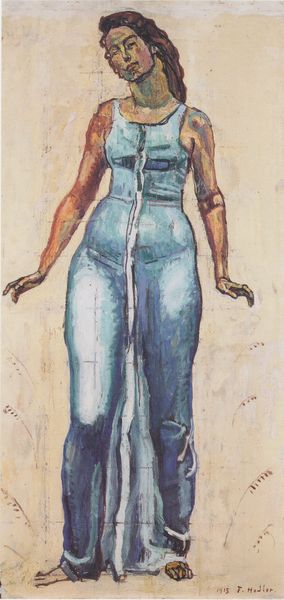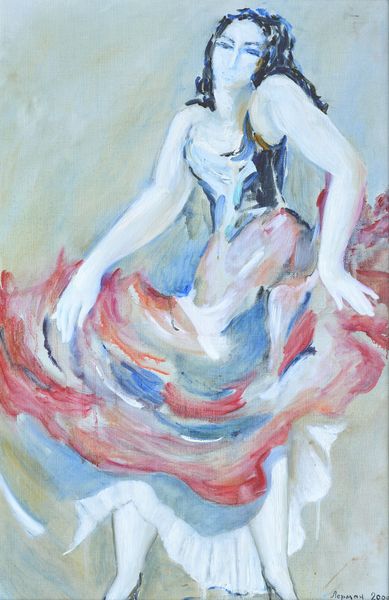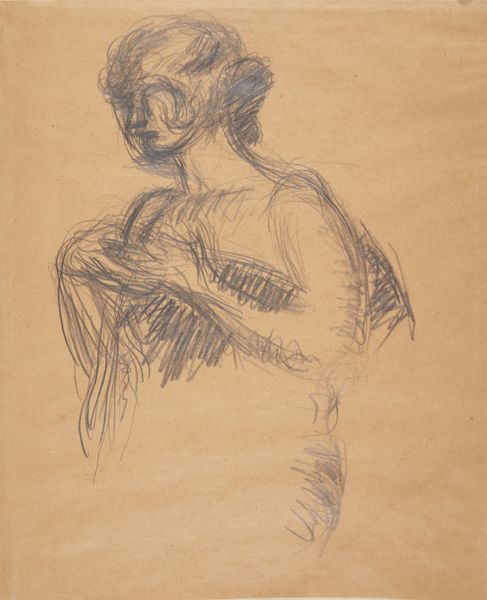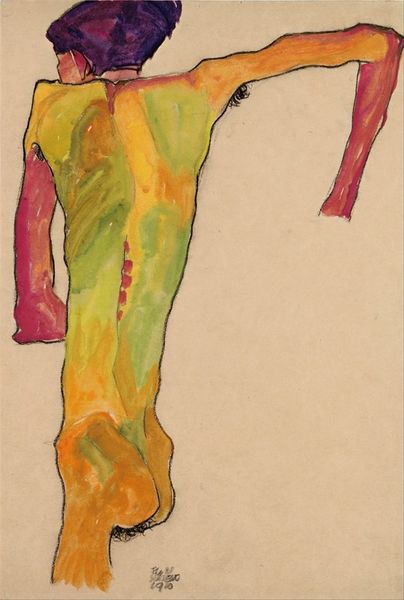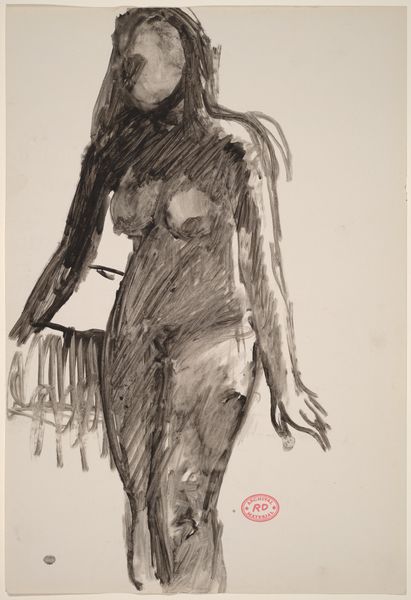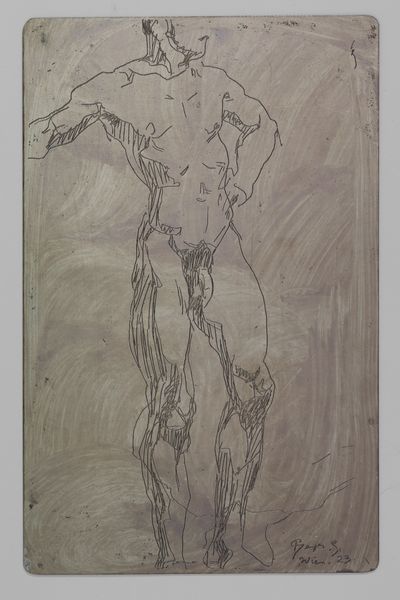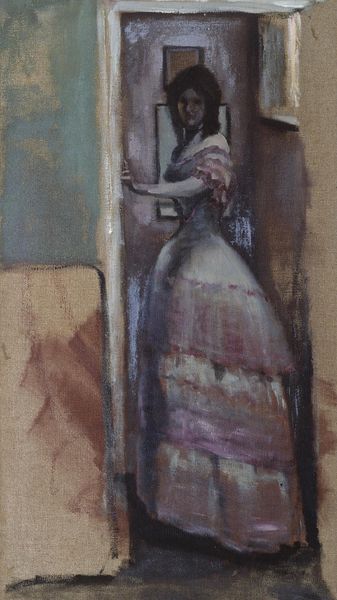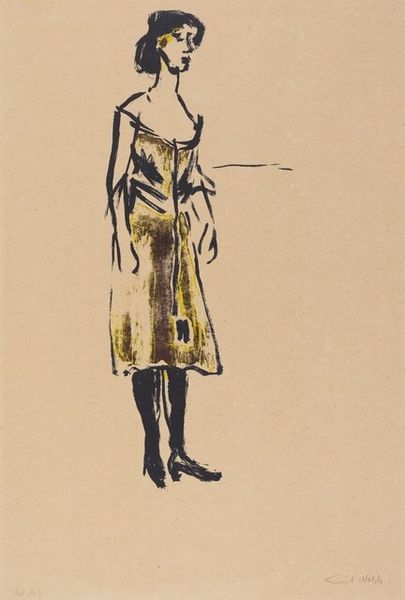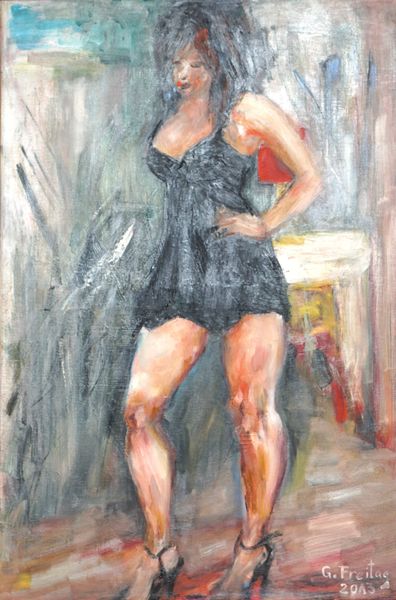
Dimensions: 124 x 60.5 cm
Copyright: Public domain
Editor: Here we have Ferdinand Hodler's "Border woman figure in blue Gwand" from 1915, rendered with oil paint and showing quite a lot of impasto. I'm immediately struck by the way the figure is positioned, almost like she’s presenting herself, yet vulnerable somehow. What do you see in this piece? Curator: This image offers a fascinating insight into the construction of national identity during wartime. Hodler painted this during World War I, and the woman's pose, gaze, and the "Gwand"—the traditional dress—all work to solidify an idea of Swiss strength and resolve in the face of external pressures. Consider the institutions promoting these images, wartime exhibitions, for instance, and what role the romanticism of traditional dress might play in encouraging specific cultural beliefs. Do you see her dress as an act of preservation? Editor: That's a really interesting take. I was initially interpreting the dress as symbolic, maybe something mythical or theatrical, and wasn’t connecting it to a specific political moment. But, yes, knowing the context of the war, it definitely shifts how I see the "Gwand," making it read as more deliberate and politically charged. So, who would have been seeing these works at the time, and where? Curator: Primarily, this imagery circulated within Switzerland through exhibitions supported by the government and various patriotic leagues. Think about it: The intent was to unify the populace, reinforce national values, and visually distinguish the Swiss identity. How do you think the visual elements, such as the woman’s gaze and the choice of colour, played into that agenda? Editor: Her gaze upward projects a certain hope or defiance perhaps. The choice of blue might be symbolic as well, linked to purity or even heaven. Learning the history behind its commission clarifies its potential for propaganda and its contribution to reinforcing a sense of unity at that time. Curator: Precisely. And understanding that public function gives us a better appreciation of Hodler's skill in navigating the complex relationship between artistic expression and national service. Editor: It really changes how I understand it. Thanks for the new perspective!
Comments
No comments
Be the first to comment and join the conversation on the ultimate creative platform.
